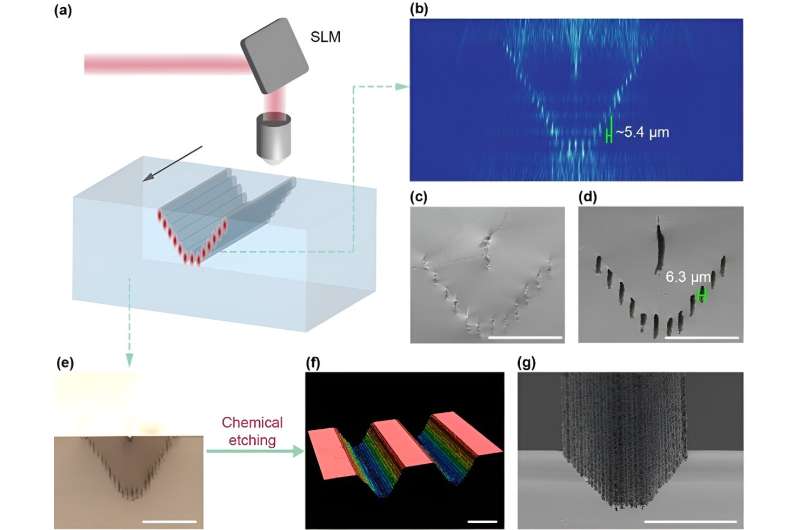Researchers at the Southern University of Science and Technology have developed a novel laser-based approach to efficiently fabricate high-precision customizable glass grooves. This breakthrough technology utilizes a multi-focus laser system to overcome the challenges associated with glass microstructure fabrication, paving the way for advancements in optical and optoelectronic technologies. Glass and its unique properties play a crucial role in various industries, and this research unlocks new possibilities for innovative applications.

Unlocking the Potential of Glass Microstructures
Glass materials are widely used in optical and optoelectronic devices due to their low cost and exceptional mechanical and optical properties. Among these applications, glass concave/convex linear structures with feature sizes ranging from several micrometers to hundreds of micrometers are particularly important. These structures, such as cylindrical microlens arrays and microgroove arrays, are extensively used for light field modulation, microfluidic chip flow channels, and optical module connectors.
However, the inherent hardness, brittleness, and low thermal conductivity of glass make it challenging to fabricate large-area glass microgrooves, especially those with tunable cross-sectional shapes. Traditional manufacturing methods have struggled to meet the precision and efficiency requirements for these intricate glass structures. This is where the breakthrough research from the Southern University of Science and Technology offers a game-changing solution.
Revolutionizing Glass Microstructure Fabrication with Multi-Focus Laser Sculpting
The research team, led by Professor Xu, has introduced a novel laser-based micromachining approach that utilizes high-precision multi-focus laser technology to efficiently fabricate customizable glass grooves with a scale from tens to hundreds of micrometers.
This innovative methodology effectively addresses the challenges associated with cross-sectional profile controllability and accuracy in glass groove fabrication. The key aspect of this approach is the development of a modulating algorithm that corrects position deviations of the multi-focus laser, which can occur due to the glass’s refractive index and nonparaxial conditions. Additionally, the algorithm ameliorates the degradation in multi-focus energy uniformity caused by circular Moiré patterns on the phase diagram. This is achieved through a combination of coordinate randomization and energy adjustment strategies.
The result of this research is a precise multi-focus laser that seamlessly aligns with the designed groove profile, significantly expediting the production of glass grooves. This process is further enhanced by subsequent chemical etching, allowing for the fabrication of a wide range of groove geometries, including trapezoidal, high-aspect-ratio triangle, and semicircle grooves.
The significance of this breakthrough lies in its potential to unlock the untapped versatility of laser-structured glass for advanced applications. This research not only contributes to the advancement of optical and optoelectronic technologies but also paves the way for innovations in various industries that rely on structured glass-based systems, such as optical fiber packaging.
Exploring the Real-World Applications of Multi-Focus Laser Glass Sculpting
The researchers have explored practical applications of the glass grooves fabricated using their multi-focus laser sculpting technique. One particularly promising application is the development of trapezoidal groove arrays, which are ideal for optical fiber packaging. By precisely controlling the cross-sectional shape and dimensions of the grooves, the researchers have created a solution that can significantly improve the integration and performance of optical fiber-based systems.
This breakthrough in glass microstructure fabrication has far-reaching implications across numerous industries. The ability to produce high-precision, customizable glass grooves with various cross-sectional profiles opens up new possibilities for optoelectronic devices, microfluidic systems, and even optical module connectors. The versatility and precision of this multi-focus laser sculpting technique have the potential to drive innovations in fields that heavily rely on structured glass-based components.
